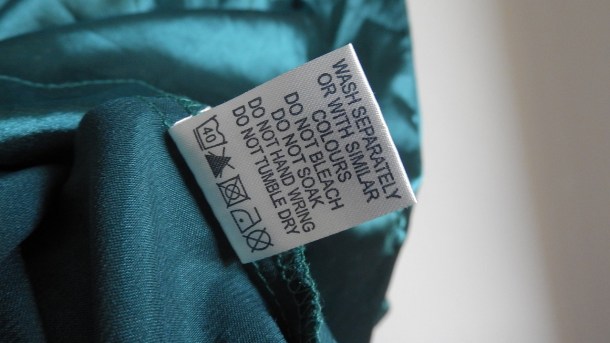
When the colours of your clothing bleed together, this is known as a colour run. Colour runs are very common, and this is everything you need to know about them.
- Why do colour run stains occur?
- The colourfastness test
- How to prevent colour runs
- How to get rid of colour run stains
Why do colour run stains occur?
The brightly coloured clothing that we buy has been dyed using colour pigments. In order for our clothes to remain a vibrant colour, the colour pigments of the dye must be securely attached to the fabric. Colour run occurs when the coloured pigments have not been adequately attached to the fabric. When these inadequately attached pigments come into contact with water, the dye begins to run and can transfer onto other items of clothing. Colour run stains are most apparent when washing isn’t separated. If a darker item of clothing begins to run, it can be damaging to lighter colours of clothing.

The colourfastness test
The most effective way to test if your clothing will run in the wash is by using the colourfastness test. This test should be carried out before you wash your item with any other clothing.
Begin the test by selecting a hidden section of your item, such as the hem or seam. Dampen that section and lay something absorbent on the spot, such as a white paper towel or handkerchief. Next, iron on top of the absorbent material. If the colour from your item bleeds onto the absorbent material than your item is not colourfast and therefore could stain any other clothing it is washed with.

How to prevent colour runs
The best way to minimise the damage of colour run stains is by washing the same, or similar, coloured clothing together. This will mean that, should your colours run in the wash, there will not be a dramatic impact made to your other items in the wash in turns of colour difference.
It is important to remember that hot water opens the fibres in clothing, therefore encouraging any non-colourfast clothing to run. The best way to combat this issue is to wash your clothing in cold water.
Finally, to prevent colour runs, don’t leave your washing in a wet pile or in your washing machine, whilst wet, for a long period of time. This encourages any non-colourfast clothing to run and potentially stain multiple items of your clothing.

How to get rid of colour run stains
If your colours have run and the stain is noticeable the best thing to do is treat the stain as soon as possible. Put your stained item back into the washing machine, on its own, and wash it again using laundry detergent. As long as you act fast, ideally when the item is still wet, the stain should remove itself. If washing your stained item using normal laundry detergent does not treat the stain, you can find specific stain remover laundry detergents.
If your colour run was particularly bad, don’t forget to put your washing machine on an empty spin to clean out your machine and avoid any damage to the clothes you put in later.

The best way to avoid colour run stains is by letting us launder your clothes for you. Book your Laundryheap service by visiting the Laundryheap website or by downloading the free Laundryheap app. We are now servicing Boston, including Boston City, Cambridge, Somerville and Brookline.













































